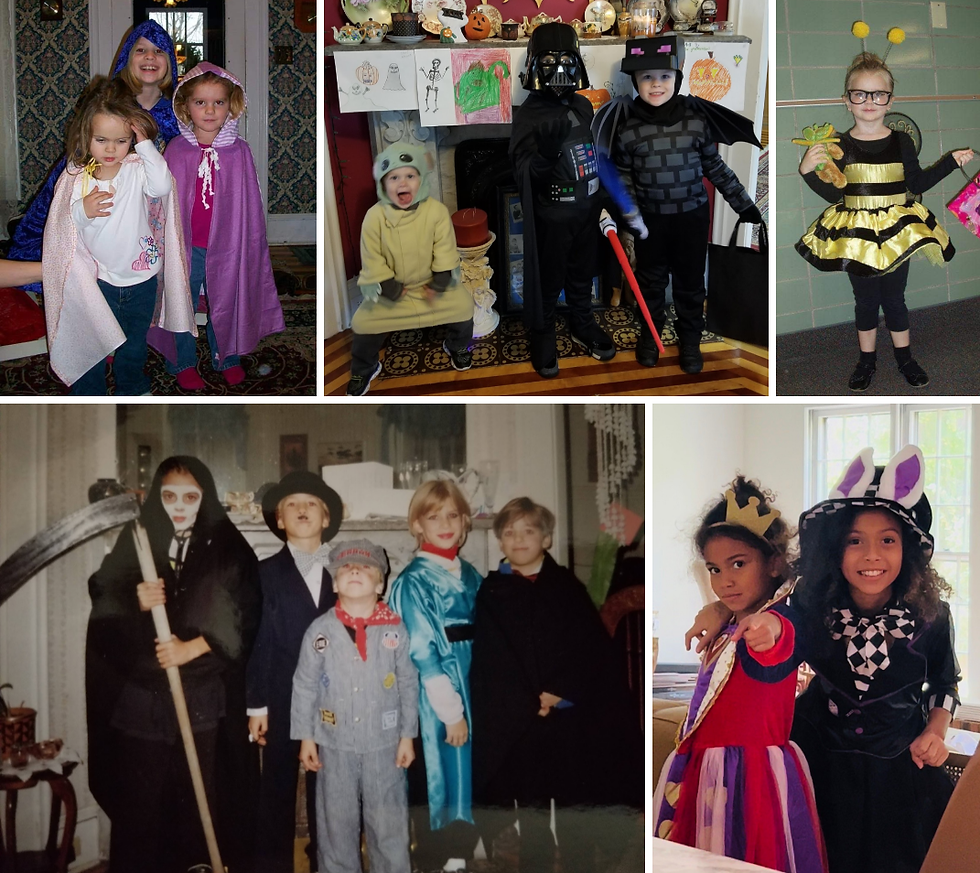Fright Night
- Colleen Briske Ferguson
- Oct 27, 2023
- 2 min read
Ghosts, witches, pumpkins, clowns, or favorite fictional characters – who will you be for Halloween this year? Do you dress up? Have you NEVER dressed up? Maybe your religious beliefs stopped you. Maybe you just were not interested. Or maybe you don’t like to pretend to be something you are not. Then there are THE REST OF US.
Many of we Americans feast on the holiday called Halloween – All Hallow’s Eve (“feast” – no pun on the candy intake even though we adults admit to snitching a few from the bowl ourselves). We decorate our houses, yards, cars, and ourselves. A projected $3.4 billion dollars will be spent on decorations this year – that’s about $31.89 per household. Per household – whatever that means as there are plenty who don’t or can't “do” Halloween. How much does that mean for the rest of us who do? Either way, what was once a religious day, is now a fun holiday.
The Ancient Celts began the original celebration called Samhain. While the harvest was being gathered, the home fires were left to burn out. Once the harvest was complete, worshipers and Druid priests lit enormous bonfires and prayed. They believed that during this night the barrier between the physical and spirit worlds could be breached, anticipating their ancestors to “cross over”. The reason for dressing in animal and monster costumes was so that fairies would not kidnap them. (Are you thinking, like me, “Fairies? Really? Not large trolls or giants or something scarier? Apparently, fairies were scary back then. Maybe Walt Disney created our modern sense of fairies when he created Tinkerbell. Possibly a future blog to look into it...?)
Very likely in hopes to replace the pagan holiday, the Catholic Church created All Saints' Day as a day to honor the saints which is held on November 1, and All Souls’ Day, a day to honor the dead was set on November 2. The first form of trick-or-treating began in England and Ireland. Already reinstated by the Catholic church, poor people would visit wealthier families’ houses to receive pastries (“soul cakes”). The receivers would then promise to pray for the souls of the homeowners’ deceased relatives. Later, children would ask for gifts – food, money and even ale. Centuries later, we have morphed the whole thing into a fantastic, scary, not-scary, holiday where we gather to enjoy each other’s company – and just for a little while we can be someone we are not.
Will you participate in the fun? Get ready – whether you like it or not, there will be a lot of ghosts and goblins wandering about on October 31st. Go out and mingle with them if you dare or stay indoors and be safe! Happy Halloween!!
BY: HISTORY.COM EDITORS, UPDATED: SEPTEMBER 12, 2023




Comments